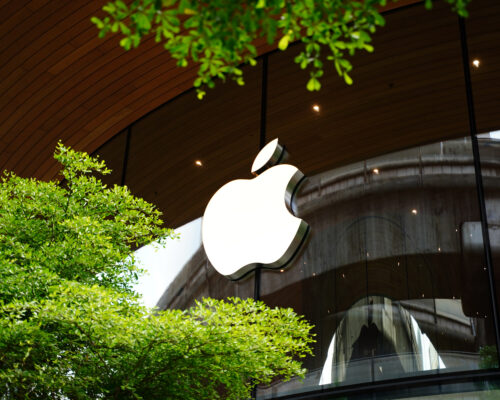Case Studies
The Post-oil Economy in the UAE and How It Is Preparing
The UAE is known for being in an oil-rich region and historically relying on oil exports as a significant part of its economy. This reliance on oil is now slowly changing in preparation for the post-oil world. Multiple government programmes and private sector investments are behind this transition.
Wind Energy in Malaysia – Potential for Growth
Malaysia has limited capacity for wind energy due to geographic and climate factors. As a result, the country's renewable energy programs primarily focus on solar and hydropower. However, wind energy can be useful in select regions with higher than average wind energy capacity.
Renewable Energy in Malaysia 2024 – From Oil To Sustainability
Malaysia's energy mix is heavily geared towards coal, oil and natural gas. However, the country has ambitious renewable energy and decarbonisation goals over the next 30 years. The rapid development of domestic renewable energy is crucial to stay on track.
Climate Change in Malaysia – Environmental Issues and Solutions
Malaysia relies heavily on fossil fuel-dependent industries, leading to near-term environmental damage and perpetuating climate change. The country needs to address these near-term issues while reducing emissions and creating adaptation strategies for the future.

How To Prepare for Climate Change: A Strategic Approach
Climate change already impacts the world, and its effects will become more severe. Global climate action will address the severity of the impacts, while local adaptation strategies will ensure that individuals are ready to deal with the effects.
Solar Energy in Malaysia: A Bright Future or Dim Prospect?
Malaysia's renewable energy targets heavily rely on expanding its solar energy capacity. Meanwhile, the country is ideally located for large-scale solar adoption. However, government policies still need improvement, and significantly more investment is required to facilitate this transition.
Carbon Capture and Storage: Pros and Cons
Carbon capture and storage (CCS) provides a pathway towards reducing fossil fuel-related emissions and bolstering hard-to-abate carbon intensive industries. Additionally, it provides benefits like economic growth and job creation and can be crucial to the global low-carbon shift. However, questions remain regarding its high costs and varying effectiveness.
Facebook’s Renewable Energy Progress: Is It Enough?
Facebook reached 100% renewable energy and net-zero for operational emissions in 2020 – goals that were set in 2018. These are good stepping stones, but they make a small impact based on the scale of the business. Scope 3 emissions are still high and will be Facebook's new carbon-neutral target in the coming decade.
Google Turns Sustainability Initiatives Into Reality
Google is known for being at the forefront of sustainability. Its initiatives are far reaching, ambitious and transparent. This goes beyond internal targets, like being carbon-neutral by 2030, but extends to how it influences the world and helps consumers make informed, sustainable choices. Its programs make it a sustainability leader in the technology industry.
Samsung’s Journey To Carbon Neutral: How Does It Stack Up?
Samsung aims to be carbon-neutral by 2050, and its public-facing messaging shows progress towards this goal. However, the company's net-zero target takes place 10 to 20 years later than Apple, Google and Amazon. This, among other concerns, raises the question: Is Samsung doing enough for sustainability?

Is Apple Sustainable?
Apple's 2030 net-zero goals for its products and supply chain are the focus of its sustainability efforts. So far, the company has been making progress toward this goal, yet there is still a long way to go. Additionally, while net-zero is important, it is not the only facet of sustainability. Topics like waste generation and resource use are also critical for limiting impacts on the planet.
Green Energy Companies Driving the Net-Zero Transition
While the global energy transition is a collective effort, it won't be possible without green energy companies driving the innovation the industry. We look at some of the leading sustainable energy companies and technology manufactures and their plans to influence net-zero goals.
How Iceland is Capturing and Storing Carbon Forever
Climeworks' Orca carbon capture facility in Iceland is an example of how to implement renewable-powered direct air capture(DAC) technology. It should be seen as a blueprint for similar projects around the world. However, DAC is still an expensive proposition, and it will fall on governments to support the industry as the technology improves and costs decline.
Case Study: Tsingshan Industrial Parks in Indonesia Post-China’s Coal Pledge
In light of the no-coal-power-overseas pledge by China’s President Xi Jinping and Indonesia’s commitment to no new coal power in the recent COP26, the industrial parks fueled by captive coal power in Indonesia, developed by China, face challenges and their future is dotted with question marks.
Most Popular
Categories
-
10
-
34
-
126
-
4
-
17
-
46
-
52
-
11
-
10
-
15
-
24
-
6
-
1
-
5
-
6
-
279
-
199
-
17
-
24
-
1
-
1
-
23
-
41
-
44
-
87
-
18
-
86
-
41
-
17
-
11
-
43
-
52
-
86
-
294
-
22
-
44
-
36
-
10
-
42
-
36

